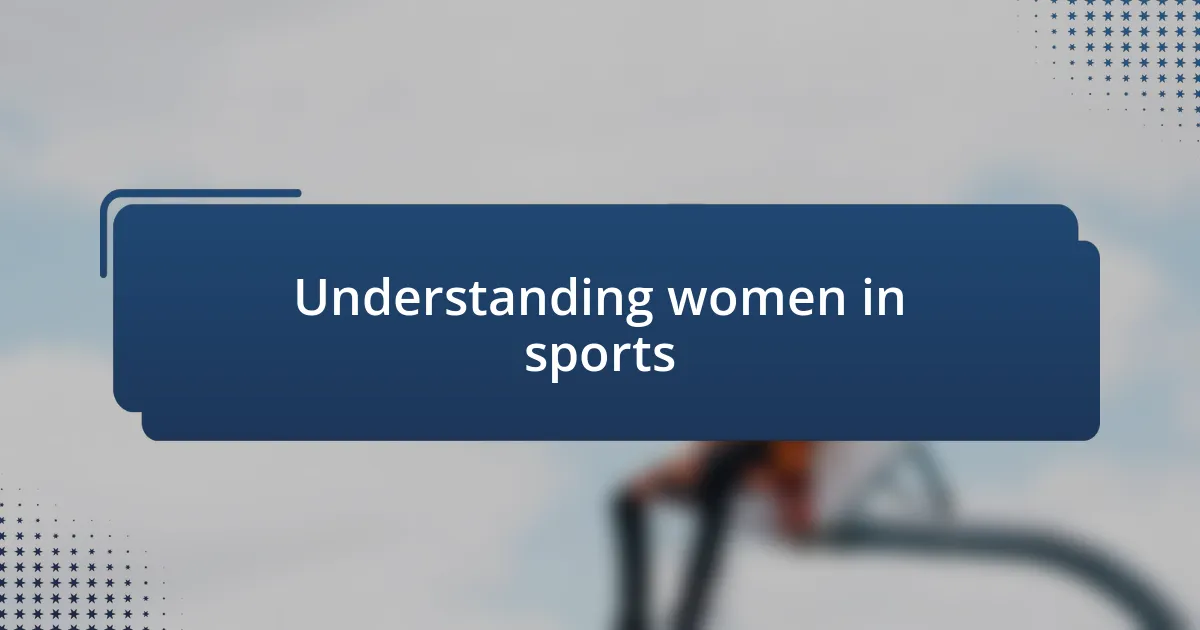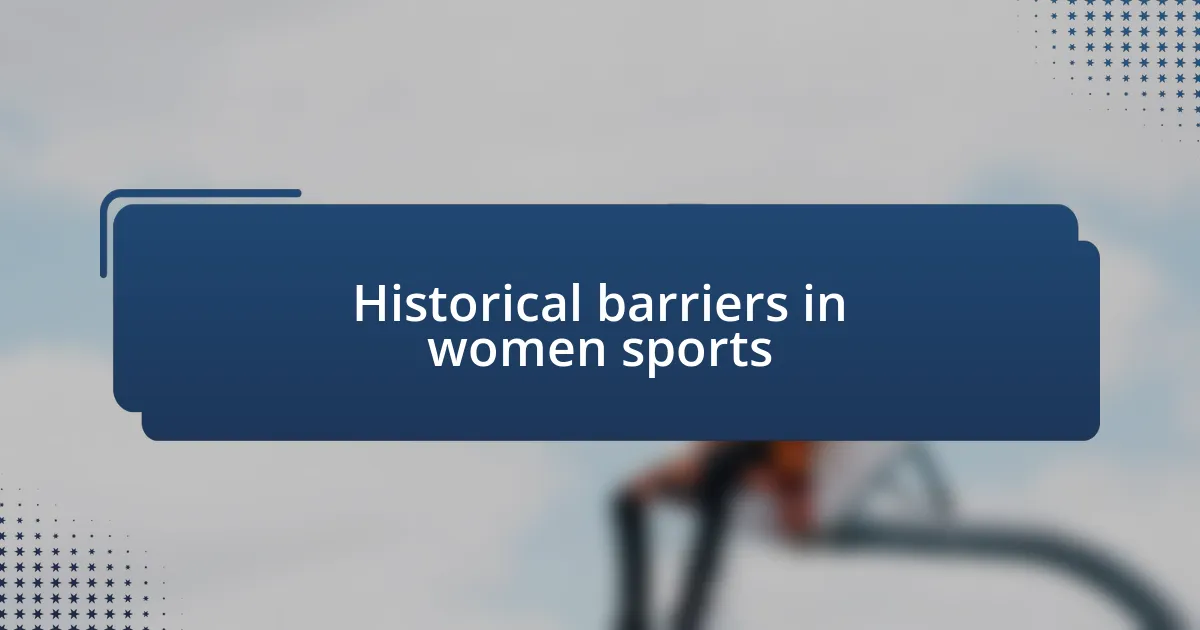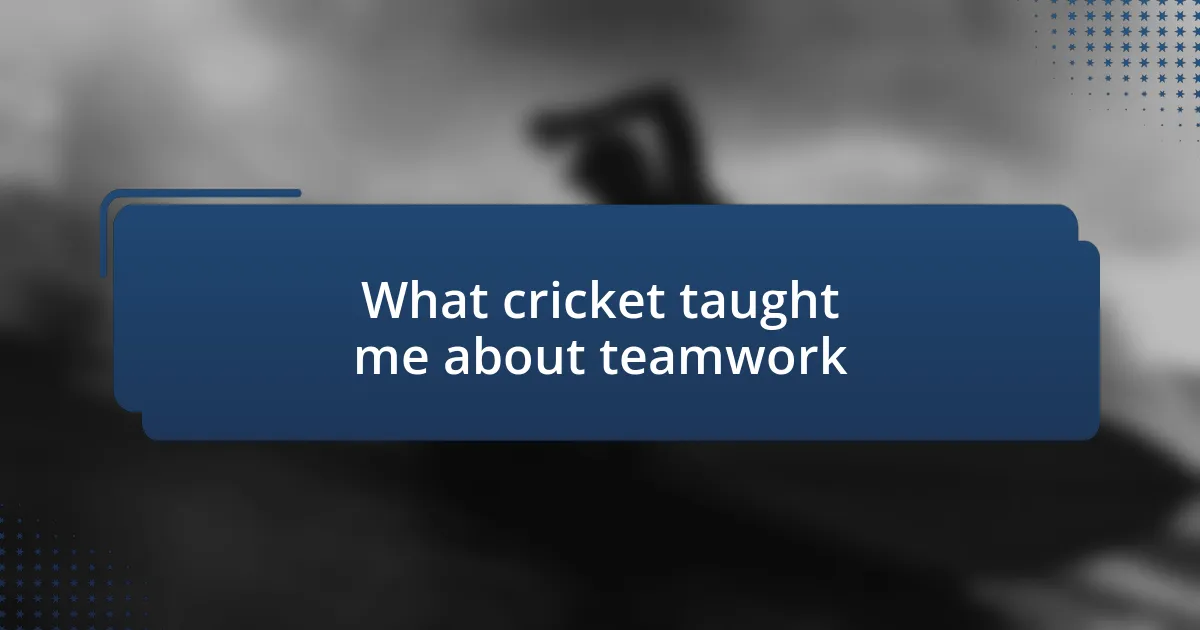Key takeaways:
- Women in sports face unique challenges, including lack of media representation and enduring gender biases, impacting visibility and opportunities.
- Gender equity is essential for empowering female athletes, ensuring equal access, culture, and representation in sports.
- Historical barriers have hindered women’s participation in sports, requiring ongoing efforts to achieve true equality.
- Building supportive communities enhances resilience and empowerment among female athletes, promoting mentorship and lasting relationships.

Understanding women in sports
Understanding women in sports means recognizing the unique challenges they face and the remarkable triumphs they achieve. I remember attending a women’s soccer match where the atmosphere was electric, yet the headlines focused on off-field issues rather than the game itself. Why is it that the talent and dedication of these athletes often get overshadowed by discussions about equality instead of celebrated?
When I think about the women athletes I admire, like Serena Williams and Mia Hamm, I notice that their journeys are not just about championships; they stand as beacons of resilience against ingrained biases. Each victory, every medal, tells a story of hard work in a landscape traditionally dominated by men. Can you imagine training for years, only to see your accomplishments dismissed simply because of gender?
Moreover, the representation of women in sports media has a long journey ahead. It’s disheartening to see a lack of coverage for women’s events while I eagerly share my excitement for an upcoming WNBA game with friends, who often don’t even know when it’s taking place. This not only affects visibility but also influences young girls’ aspirations. How can we expect future generations to dream of greatness if they don’t see it?

Importance of gender equity
Gender equity in sports is fundamentally about creating a level playing field where individuals are valued for their abilities regardless of gender. I often reflect on how sports can be a powerful platform for empowerment. Just last month, I spoke with a young girl who dreams of playing basketball. She shared her frustrations about the limited opportunities available for girls in her local league, illustrating the stark difference in resources compared to boys’ teams. This disparity contributes to a cycle where talent is stifled, leaving potential unfulfilled.
Moreover, promoting gender equity goes beyond just providing equal opportunities; it also fosters a more inclusive culture. I remember a panel discussion I attended where female athletes shared their stories. It was inspiring to hear how their experiences shaped their resilience and determination. However, they also pointed out that sponsorship and media representation often favor male athletes, which sends a message that their hard work is less valuable. Can we imagine a sports world where every athlete, regardless of gender, has equal visibility and support?
Ultimately, gender equity can transform the landscape of sports, allowing for a richer variety of stories and inspirations. I think about how my niece looks up to female athletes, and it’s clear that representation matters. When young girls see women excelling in sports, it broadens their horizons and encourages them to pursue their dreams without hesitation. How can we build a future where girls like my niece grow up knowing that they can conquer any field, both literally and metaphorically?
| Aspect | Importance of Gender Equity |
|---|---|
| Opportunities | Creates equal access for all genders to participate in sports. |
| Culture | Fosters a more inclusive environment that values diverse experiences. |
| Representation | Encourages visibility of female athletes, inspiring future generations. |

Historical barriers in women sports
The journey toward equality in women’s sports has long been obstructed by entrenched historical barriers. These challenges have often been rooted in cultural beliefs and societal norms, which diminished women’s roles in athletics. I recall a documentary I watched about the early days of women’s sports in the 20th century. It highlighted how women were not only discouraged from participating but often criticized for simply daring to compete. This stigma created a climate where few women had the support to pursue sports, reinforcing the notion that athletic achievement was solely a male domain.
- Women were systematically excluded from many sports until the late 20th century.
- The passage of Title IX in 1972 in the United States marked a significant step forward, yet its implementation took decades.
- Female athletes often faced skepticism regarding their capabilities, despite proving their talents in various competitions.
- Media coverage of women’s sports was minimal, perpetuating the idea that there was less interest or merit in women’s athletic endeavors.
- Traditional views on femininity led to the belief that competitive sports were unbecoming for women, limiting participation and recognition.
As I reflect on these historical limitations, I feel a deep appreciation for the strides we’ve made, yet a sense of urgency remains to continue the fight for equality.

Building supportive communities
Building a supportive community for women in sports is essential, as it fosters an environment where athletes feel encouraged and valued. During my time coaching a youth girls’ soccer team, I witnessed firsthand the transformative power of community. When the girls supported each other, celebrating each goal and comforting one another after a tough loss, they became more than just teammates; they became a sisterhood.
I often think about how friendships developed in these supportive environments can last a lifetime. Women need safe spaces to voice their struggles, celebrate their achievements, and share experiences. I remember a parent reaching out to me about organizing a local event to showcase female athletes. That simple idea blossomed into an empowering day filled with mentorship and camaraderie, illustrating how collective efforts can uplift everyone involved.
Creating these supportive networks isn’t just beneficial; it’s necessary. If we truly want to promote lasting change in women’s sports, we must ask ourselves: how can we better engage our communities? From grassroots initiatives to larger organizations, building strong, nurturing networks can make all the difference. By investing in relationships, we not only empower individual athletes but also catalyze a shift in societal attitudes towards women in sports.





